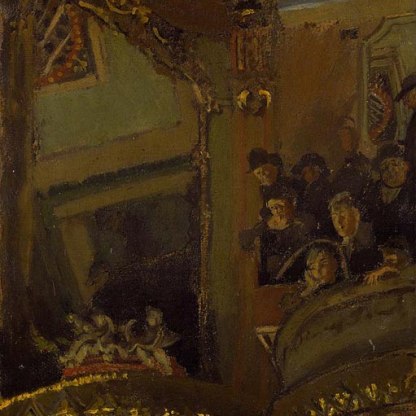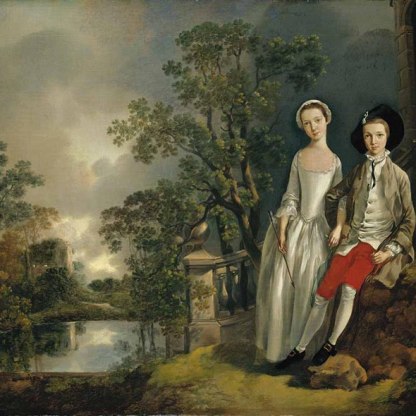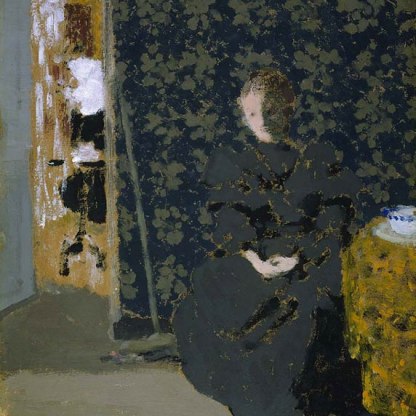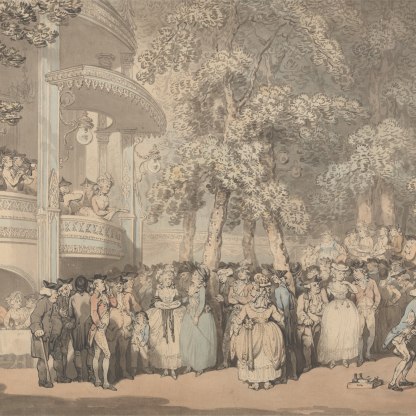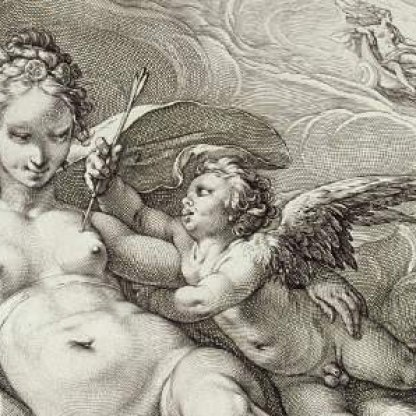The Music Hall
The boy I love is up in the gallery.
The boy I love is looking down at me.
There he is!
Can't you see?
Waving his handkerchief,
As merry as a robin that sings on a tree.
George Ware
One of the alternative titles to Sickert's painting comes from this song, which provided Marie Lloyd, one of the most successful performers during the heyday of British Music Hall, with her big break. In the early days of her career, Marie would plant her little sister in the balcony to wave a handkerchief when the appropriate line came around. The waving of handkerchiefs became a tradition whenever the song was sung.
It is a typical example of the lighthearted, sentimental ditties that Lloyd and her fellow performers helped make so popular in the late nineteenth and early twentiethth centuries. Several of them survive today as songs learned in childhood: 'Daisy, Daisy give me your answer do', 'My Old Man's a Dustman', 'Daddy wouldn't by me a bow-bow', 'Champagne Charlie'.
But Lloyd was celebrated as much for her sauce as her singing. For every romantic song like 'The boy I love...', there was a racier number. The most popular of these was 'She'd never had her ticket punched before', performed by Lloyd with appropriate gestures and facial expressions.
Moralists of the day fretted about the popularity of this type of entertainment, not simply because of the double entendres being peddled. The music hall originated in the back rooms and cellars of London pubs, and plenty of drinking still went on during performances. Prostitutes were known to ply their trade in the foyers of the buildings, as they had done in the pleasure gardens of London in the eighteenth century.
In his 1857 book The Night Side of London, J. Ewing Ritchie described the audience of a music hall as people who would prefer to 'be drowned rather than get up and walk into the ark'. On 21 September 1882, there was a tense stand-off between members of the Salvation Army and theatre-goers at the site of the Grecian Theatre and Eagle Tavern on the City Road, a popular drinking-hole and one of the oldest music halls in London.
Sickert's audience look pretty docile, but there are records of missiles being thrown at acts that failed to please the fickle, booze-fuelled crowd – rotten fruit and vegetables, eggs, even dead animals.
Although Music Hall did exist outside London, it was in the capital that it flourished. The legendary nineteenth-century comedian Dan Leno defined London as 'a large village on the Thames where the principle industries carried on are Music Halls and the confidence trick'. In June 1888, it was recorded in the House of Lords that London contained 50 theatres, 35 concert halls and 473 music halls.
Performances usually started around 7.45 p.m. and went on until 11.30 p.m., and music was only part of the entertainment. In her time Marie Lloyd might have shared the billing with acts like Marvelle and his Wonderful Educated Cockatoos, Professor Harvard and his Amazing Disappearing Lady, Captain Pike's Performing Fish and Herr Wallender's Pack of Enormous Boarhounds.
In 1912 Charlie Chaplin appeared at the New Bedford, but by then London had 400 cinemas and the medium in which Chaplin was to become world-famous was destroying the traditional live entertainment. Although Music Hall continued to produce stars like Dame Gracie Fields and George Formby, it dwindled under the rise of first radio and then television.
The tradition still survives today, however, particularly in seaside theatre summer seasons, and every evening at 8 p.m. in the Players' Theatre underneath the arches of Charing Cross Station in London.
Other highlight objects you might like
Other pathways and stories you might like
Sign up to our emails
Be the first to hear about our news, exhibitions, events and more…

